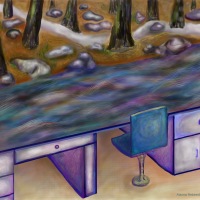Microbial Indicators of Sewage Contamination

We work with other academic institutions, NGO’s, and community groups to evaluate the effectiveness of sewage indicator water quality monitoring in terms of managing watersheds and public health. Our lab drills down into the microbial ecology of clean and contaminated surface and drinking waters to learn more about sources and persistence of sewage indicating bacteria (e.g. Enterococcus, coliforms, E. coli) in these waters. Our work has begun to elucidate the presence and persistence of these indicating bacteria in sediments, water, and air, particularly in crowded urban environments with sewage-contaminated waterways.
Relevant Publications:
“Challenges to Managing Microbial Fecal Pollution in Coastal Environments: Extra-Enteric Ecology and Microbial Exchange Among Water, Sediment, and Air”, Current Pollution Reports, 2017.
“Microbial agents of concern in water and air at the Hudson River Estuary waterfront”, Final Reports of the Tibor T. Polgar Fellowship Program, 2013.
Relevant Research Activities:
Oral Presentation at ASLO 2018: Microbial exchange of sewage associated bacteria among sediment, water, and air in a freshwater stream system
Student Research presented at 2015 Environmental Consortium: Exploring trends in commonly used bacterial sewage indicators in conjunction with an antibiotic resistance proxy (gene cassette int1) in a tributary of the Hudson River







